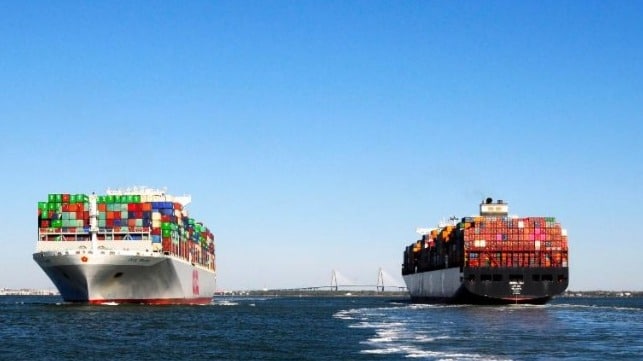BIMCO Calculates a Third of Ships Could Have to Pay Fees Under USTR Program
U.S. Trade Fees Set to Impact Shipping Industry

The U.S. Trade Representative’s new port fee program is set to launch on October 14, raising questions about its potential effects on the shipping industry. While the program aims to counteract Chinese dominance in maritime trade, industry analysts from BIMCO predict that bulk carriers and certain tankers will be most affected. Despite this, they believe freight rates for U.S. importers and exporters are unlikely to rise significantly at this time.
Understanding the Fee Program
The fee program, initiated by the Biden administration following a complaint from U.S. trade unions, targets unfair practices in the maritime sector, particularly those benefiting Chinese shipbuilding. The program imposes fees on vessels that are Chinese-owned, operated, or built. According to BIMCO’s analysis, the program could lead to over $3.2 billion in additional costs for the top ten container shipping companies by 2026. However, the organization notes that containerships may not be the hardest hit segment.
Bulk carriers are expected to face the most significant impact, with 45 percent of these vessels potentially subject to the new fees. In contrast, only 30 percent of crude tankers and container ships, and 19 percent of product tankers, are likely to incur charges upon arrival at U.S. ports. BIMCO estimates that about 35 percent of all ships calling at U.S. ports could be affected, representing nearly half of the combined capacity of bulkers, crude and product tankers, and container fleets.
As the industry seeks clarity on definitions such as “Chinese-owned” and “operated,” BIMCO suggests that approximately 70 percent of the vessels paying the fees will be Chinese-owned, while only about 30 percent will be Chinese-built. Notably, many Chinese-built ships are exempt from the program due to size or U.S. ownership, which could further influence the overall impact.
Potential Confusion and Market Reactions
As the implementation date approaches, uncertainty remains regarding the final number of vessels subject to the fees. Factors such as refinancing efforts and changes in vessel ownership structures could alter the landscape. Additionally, vessels involved in Chinese leasing programs may also be affected. Despite the potential for a significant number of bulkers and tankers to fall under the program, BIMCO believes the overall global impact will be minimal, as these vessels represent a small fraction of global ship demand.
In the container shipping sector, BIMCO reports that less than 20 percent of the top ten carriers’ vessels calling at U.S. ports will be subject to the fees. Notably, Chinese carriers COSCO and its subsidiary OOCL are expected to incur a substantial portion of the fees. While these carriers have acknowledged the potential costs, they remain committed to maintaining their services.
Customs and Border Protection has emphasized that it is the responsibility of vessel operators to determine fee obligations. Ships must pay the fees online in advance to avoid potential denials upon arrival at U.S. ports. As the program launches, the possibility of confusion and delays looms large, especially as shippers rush to import goods from China before the expiration of current tariff delays on November 10. Retailers anticipate that these factors will contribute to a steady decline in container import volumes over the coming months.
